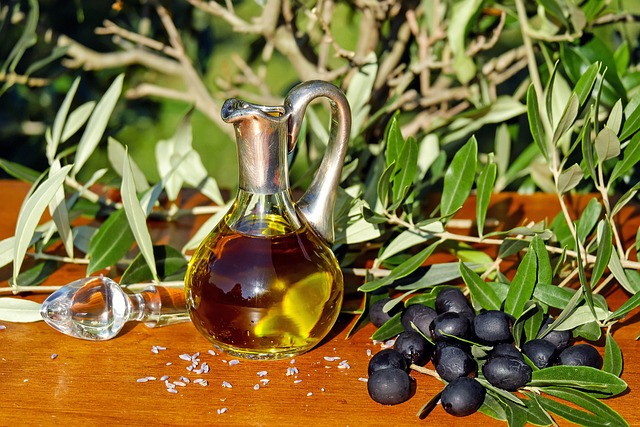
The Olive tree is quite beautiful, with flowing misty-green elongated leaves that have a silver sheen on the underside. Since the earliest of times, the Olive leaf has been referenced as a mythological symbol, as a nutritional food and as a healing medicinal, to name just a few citations. Olive oil is more widely used for cooking and eating than any other oil on earth. Even modern medicine extols its virtues as a heart-healthy food.
The outstretched Olive branch is a well-known sign of peace. In Genesis (8:11), Noah is told of the nearness of land when a dove flew over the arc with an Olive leaf in her mouth. The Egyptians extolled the leaf as a symbol of cosmic power. In the city of Phoenix, Arizona, there are parks filled with Olive trees, the ideal place to take a walk and cool down from the blazing hot sun.

Legend and folklore are not the only venues for extolling the virtues of the Olive tree. For many years, scientists have been researching Olive leaf’s properties as it relates to protection from disease. The leaves contain oleuropein, a bitter compound that affords the Olive tree a marked resistance to insects, bacteria and other parasites. Its use for helping with human health issues can also be found in older medical literature. For
instance, The Pharmaceutical Journal published an anti-malarial recipe in 1854 made from Olive leaves and
wine.
During the 1960’s there were many published studies in Europe reporting that the bitter compound, oleuropein, had many health benefits based on animal studies. These included lowering blood pressure, increasing coronary artery blood flow, relaxing abdominal muscle spasms and lowering blood pressure. A large American pharmaceutical corporation began other research on one isolated constituent of oleuropein, called elenolic acid. This compound was proven to have the capacity to destroy and inhibit the growth of an incredible array of pathogenic organisms including bacteria and yeasts and viruses when tested in-vitro (ie. in a petri dish). The organisms that were wiped out included common infectious illnesses such as cold and flu viruses, herpes and retroviruses like HIV. Types of bacteria and parasites included planterum, E. coli and malariae, to name a few.
Apparently, the old anti-malarial Olive leaf and wine remedy had some merit! When the in-vitro (in live
animals) studies commenced, no toxic effects were reported, even at high doses. However, the isolated elenolic acid, which was given in the form of calcium elenolate, did not circulate as a free compound, but became bound with proteins in the blood and was thereby inactivated. Perhaps the pharmaceutical company discontinued research at this point since whole plant compounds could not be patented and therefore not profitable to develop. In any event, their research paved the way to understanding just how useful Olive leaf extract could be.
Today, health care practitioners familiar with natural therapies advise people to consider Olive leaf extract for many conditions caused by virulent microorganisms such as colds and flu, herpes outbreaks, Chronic Fatigue Syndrome, Candida and Parasites. Furthermore, other than the occasional allergy, Olive leaf has no known toxic effect and therefore, can be used preventatively as well.

